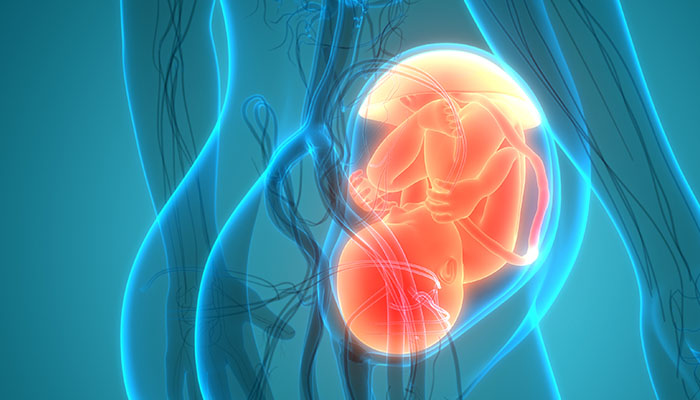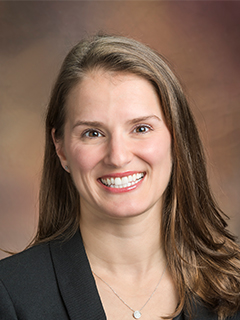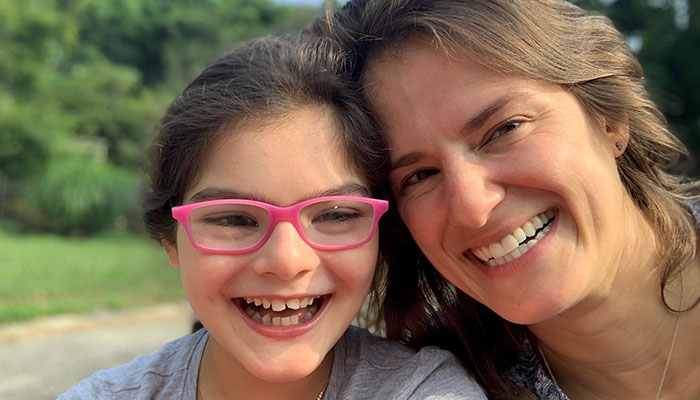HOW CAN WE HELP YOU? Call 1-800-TRY-CHOP
In This Section
CHOP Researcher Earns Competitive Child Neurology Career Development Grant

Dr. Barber is studying sex differences after hypoxic ischemic encephalopathy (HIE), an early-life brain injury.
Danielle Guez Barber, MD, PhD, a physician-scientist in the Division of Neurology at Children’s Hospital of Philadelphia, earned a highly competitive grant from the Child Neurology Career Development Program (CNCDP). This program supports early career development of talented child neurologists pursuing a research career in pediatric neurology and neuroscience.
CNCDP scholars receive three years of individualized mentoring and research funding. With this support, Dr. Barber is studying sex differences after hypoxic ischemic encephalopathy (HIE), an early-life brain injury.
Dr. Barber’s study approach, which has been used in other neurologic diseases such as stroke and multiple sclerosis but not yet in HIE, is to use sex differences as a way to learn about the mechanisms underlying the brain injury. Like the contrast substance used in an MRI scan to visualize pathology that is otherwise obscured, the sex differences will provide the contrast to illuminate the brain injury mechanisms that affect outcomes.

Danielle Barber, MD, PhD
“The CNCDP will serve an important role in bridging my career from child neurologist with postdoctoral training to an emerging early-stage investigator focused on developing effective therapies for HIE,” Dr. Barber said.
Hypoxic Ischemic Encephalopathy
HIE is caused by lack of blood or oxygen to the brain or other organs. Usually, the other organs recover, but the brain sustains a lasting injury. With an incidence between one and four per 1,000 live births, perinatal HIE most often occurs in full-term babies as a result of a problem during the birth process, such as cord prolapse, placental abruption, uterine rupture, or maternal trauma.
After this early-life brain injury, approximately 20% of the babies will not survive. Of those who do survive, there are significant consequences that can involve motor impairment (cerebral palsy), central visual impairment, hearing impairment, language impairments, cognitive impairment, and epilepsy.
The only HIE treatment currently available is therapeutic hypothermia, which involves cooling the body to slow down the injury cascade and the brain’s metabolic demand. If the clinicians can recognize within six hours of the baby’s birth that they may have HIE and the infant meets criteria, then the infant is placed on a cooling protocol that calls for cooling the body for two days, rewarming for one day, monitoring for seizures, and treating seizures if any occur.
Therapeutic hypothermia helps many children with overall survival and improves motor outcomes, according to Dr Barber, but it’s not a cure. Many children still have learning and other disabilities after HIE.
“These children may learn to walk and feed themselves at about the right age, keeping up with their early-life milestones,” Dr. Barber said, “but once they get to school age, they’re not reading as fast as their peers. They’re struggling in school. They may have other emotional or behavioral difficulties.”
Using Sex Differences as a Way to Learn About Mechanisms of HIE
Dr. Barber is specifically interested in the immune response to the injury and is studying the balance between two cell types: the brain resident microglia, known to be important for learning, and the infiltrating peripheral macrophages that enter the brain via blood after an injury.
She hypothesizes that the response of these two cell types may be different in males and females, and this may explain some of the outcome differences she has observed in HIE mouse models.
Under the training guidance of her mentoring team, including CHOP neuroscientist Amelia Eisch, PhD, Dr. Barber is using genetic and pharmacologic tools, as well as careful behavioral assessments, as she works with a clinically relevant perinatal brain injury model to test mechanistic contributions of the brain immune response.
“Knowing there are differences in outcomes as well as differences in the pathways to get to those outcomes, and then being able to contrast those pathways, allows us to find new therapeutic targets that may be useful not just in the very acute periods — the first six hours after birth when cooling should start, but also during the next day or two after birth,” Dr. Barber said. “This would give a broader window for therapeutic intervention.”
And if Dr. Barber discovers it’s the peripheral immune cells that are the ones making the injury worse in males, then those cells could be targeted for treatment in all babies with HIE.
“There are drugs that can block the entry of those cells into the brain so they can still do what they need to do outside of the brain, but we don’t have to let them come into the brain and worsen injury,” Dr. Barber said.
‘Pure Sunshine’ is Driving Force
Although Dr. Barber already had a neuroscience PhD and was going into a career in child neurology, her oldest child was the driving force behind the direction Dr. Barber’s research took, as Noa had HIE at birth.

Dr. Barber with daughter, Noa
When Noa was still in the neonatal ICU, her first neurologist shared with Dr. Barber that girls with HIE seem to do better than boys — but they didn’t know why.
“For 10 years, that question has been lingering in my mind, and now I’m using science in the lab to start figuring out the answer.”
Noa is “incredible,” according to mom.
“She has a brilliant sense of humor and is the hardest working kid I have ever met,” Dr. Barber said. “She’s a fourth-grader with diverse interests and is pure sunshine. She has taught me so much and drives my passion to move the field forward and improve outcomes for kids after neonatal brain injuries.”